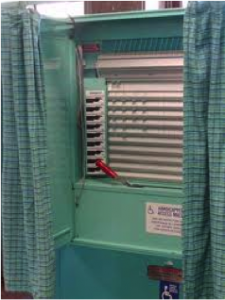© 2022 Votrite | All rights reserved
History of various voting methods
For years voters have taken the ballot for granted. The ballot has been through a lot of changes over the centuries. The word ballot comes from the Italian word, ballota (meaning “little colored ball”), because votes were originally cast using balls. In ancient Athens, each voter was given a small clay ball, and the voter would drop the ball into their candidate’s clay pot, or ballot box.
The practice of using balls to cast votes continued up until the late 19th century, well after more advanced voting machines were invented. Did you know the term blackball came from this usage?
To vote for someone’s membership in to a secret society, a voter was given two balls: a white ball and a black ball. To vote in favor of the candidate’s membership, the voter would drop the white ball into a box. To vote against a candidate, the voter would deposit the black ball. The term is still used today to mean to exclude someone.The use of paper ballots dates back to Rome in 139 B.C., but the concept didn’t really take off until the mid-1800s. An election held in Victoria, Australia, using a standardized ballot form featured all the candidates on one ballot and allowed the voters to mark directly on the ballot their choice for office. Appropriately known as the “Australian ballot,” this form of ballot voting didn’t reach the United States until the late-1880s. New York and Massachusetts were the first states to use the Australian ballot.
Mechanical Lever Machines
 The first lever voting machine, called the “Myers Automatic Booth,” debuted in Lockport, New York, in 1892. With mechanical lever voting machines, each candidate or ballot issue is assigned to a lever. The booth has a lever the voter must pull after entering the booth to draw the curtains for privacy. The voter then pulls a lever assigned to his or her desired candidate or ballot issue. The machine records each vote as well as the number of people who voted. When the voter exits the booth by pulling the lever to open the curtain, the levers automatically return to their original positions.
The first lever voting machine, called the “Myers Automatic Booth,” debuted in Lockport, New York, in 1892. With mechanical lever voting machines, each candidate or ballot issue is assigned to a lever. The booth has a lever the voter must pull after entering the booth to draw the curtains for privacy. The voter then pulls a lever assigned to his or her desired candidate or ballot issue. The machine records each vote as well as the number of people who voted. When the voter exits the booth by pulling the lever to open the curtain, the levers automatically return to their original positions.
Mechanical lever machines became so popular that by 1930, every major U.S. city used them, and by the 1960s more than half of the country voted by lever. Mechanical lever machines were still used up until the 1996 presidential election. They are no longer made and have since been replaced by computerized voting machines.
Punch Cards
The standard punch card, invented by Herman Hollerith in the late 1880s, was originally designed to tabulate statistics for the Baltimore Board of Health. It was so effective, the government decided to use it for the 1890 U.S. census.
With the punch card voting system, a card containing several small holes is attached to a sturdy board. Voters use a stylus, or a pen-shaped tool, to punch through the holes. This forms a chad. Once the voting has been completed, the voter may drop his or her ballot into the ballot box or feed it into a computerized vote-tabulating machine.
Two types of punch cards have since been created. They are the “votomatic” and the “datavote” card. The votomatic cards have numbers that correspond to each hole. The number of the holes is the only information printed on the card. The list of candidates or ballot issues are printed somewhere else within the voting booth for the voter to refer to. The datavote, on the other hand, has the names of the candidates or ballot issues printed directly next to the punch hole.
Mark-Sense (Optical Scanner)
Mark-Sense voting systems, often called Optical Scanners, have preprinted ballots consisting of the candidates’ names or the ballot issues with an empty box, circle, rectangle, or arrow next to them. The voter must fill in the circle or box with a black marker and feed the ballot through a computerized vote-tabulating machine. The computer recognizes the darkest mark on the ballot as the correct vote and records it.
Direct Recording Electronic (DRE) Voting Machines
Probably the most technologically advanced voting systems to be developed during the 20th century are the direct recording electronic (DRE) voting machines. Because they are computerized, there is no need for a ballot; votes are entered using a touch screen or push button. An attached keyboard is provided if the voter would like to write in a vote. The computer stores the votes using a memory chip, diskette, or smart card.
The most commonly used DRE voting machines are the ones which are basically a PC with touch-screen capabilities. The voter sees the choices on screen and simply touches the correct vote choice. The voter is also able to write-in a vote using an attached keyboard.
There are many older versions of DRE voting machines, but new and improved ones are on the horizon like Votrite.

